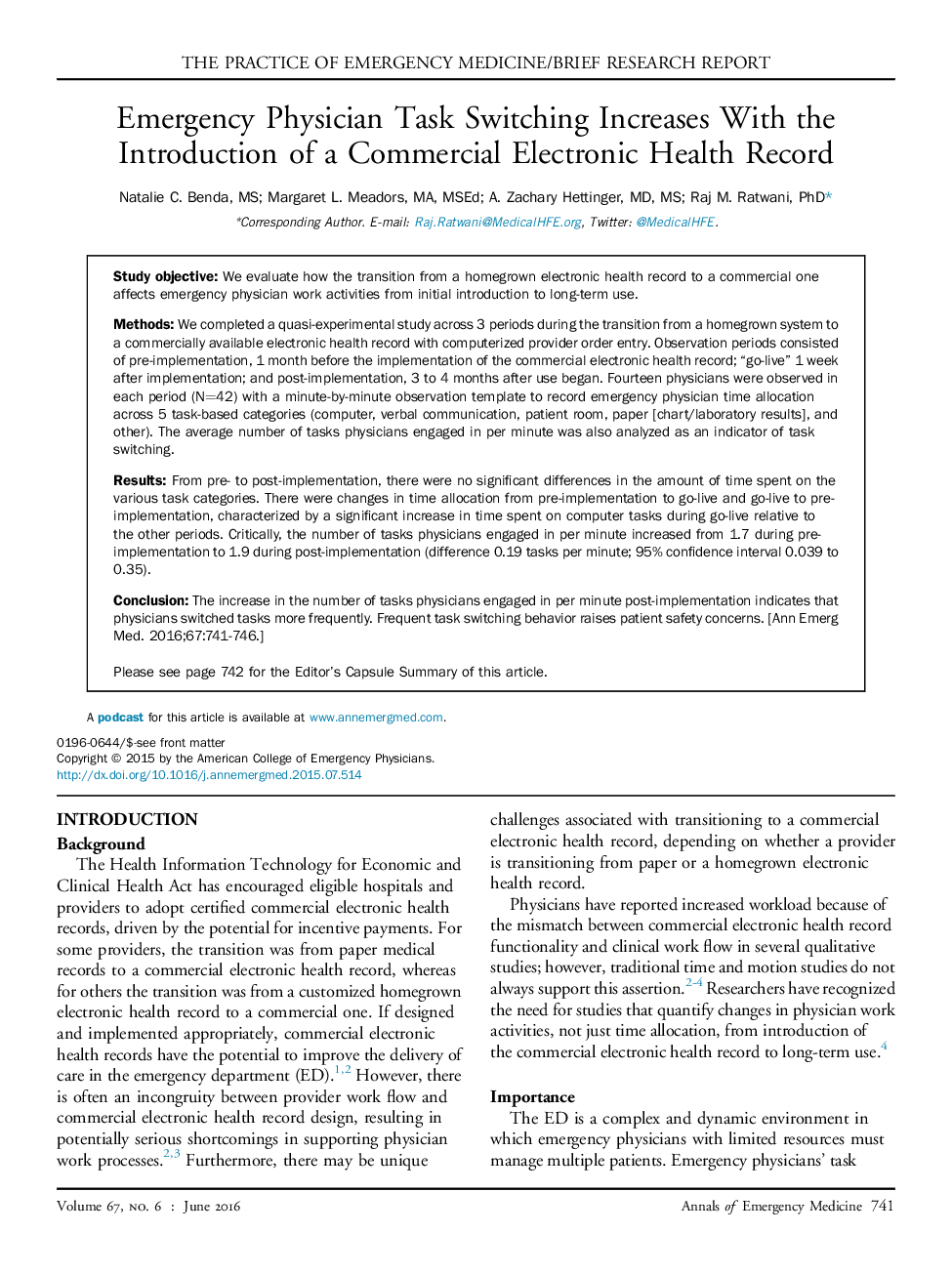| Article ID | Journal | Published Year | Pages | File Type |
|---|---|---|---|---|
| 3228340 | Annals of Emergency Medicine | 2016 | 6 Pages |
Study objectiveWe evaluate how the transition from a homegrown electronic health record to a commercial one affects emergency physician work activities from initial introduction to long-term use.MethodsWe completed a quasi-experimental study across 3 periods during the transition from a homegrown system to a commercially available electronic health record with computerized provider order entry. Observation periods consisted of pre-implementation, 1 month before the implementation of the commercial electronic health record; “go-live” 1 week after implementation; and post-implementation, 3 to 4 months after use began. Fourteen physicians were observed in each period (N=42) with a minute-by-minute observation template to record emergency physician time allocation across 5 task-based categories (computer, verbal communication, patient room, paper [chart/laboratory results], and other). The average number of tasks physicians engaged in per minute was also analyzed as an indicator of task switching.ResultsFrom pre- to post-implementation, there were no significant differences in the amount of time spent on the various task categories. There were changes in time allocation from pre-implementation to go-live and go-live to pre-implementation, characterized by a significant increase in time spent on computer tasks during go-live relative to the other periods. Critically, the number of tasks physicians engaged in per minute increased from 1.7 during pre-implementation to 1.9 during post-implementation (difference 0.19 tasks per minute; 95% confidence interval 0.039 to 0.35).ConclusionThe increase in the number of tasks physicians engaged in per minute post-implementation indicates that physicians switched tasks more frequently. Frequent task switching behavior raises patient safety concerns.
